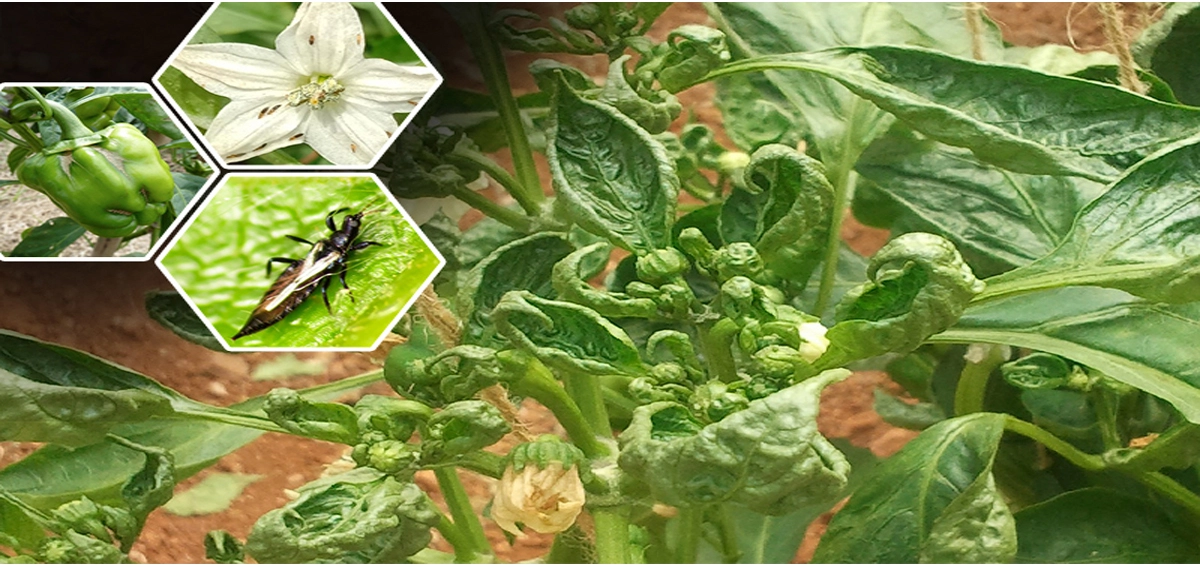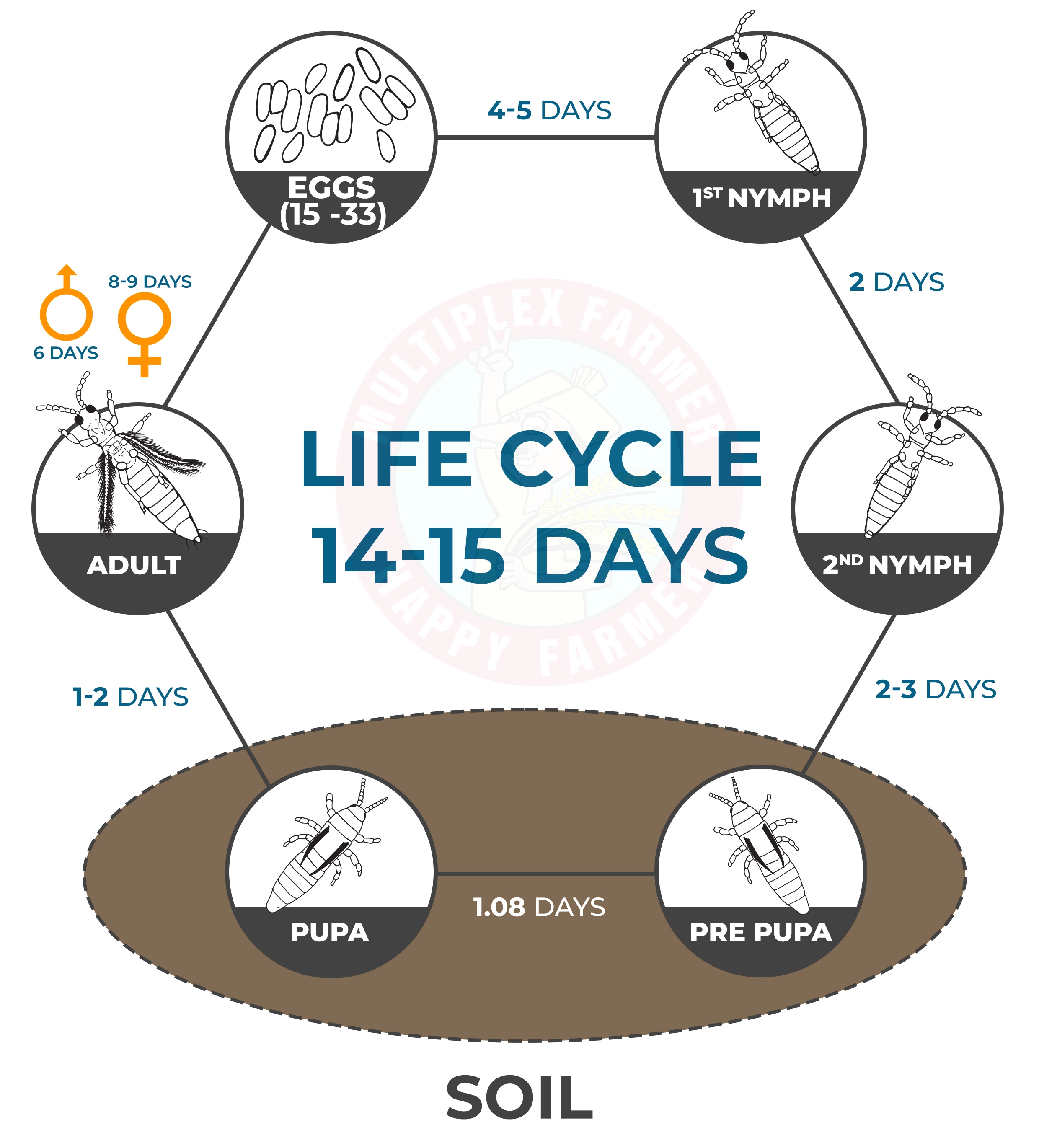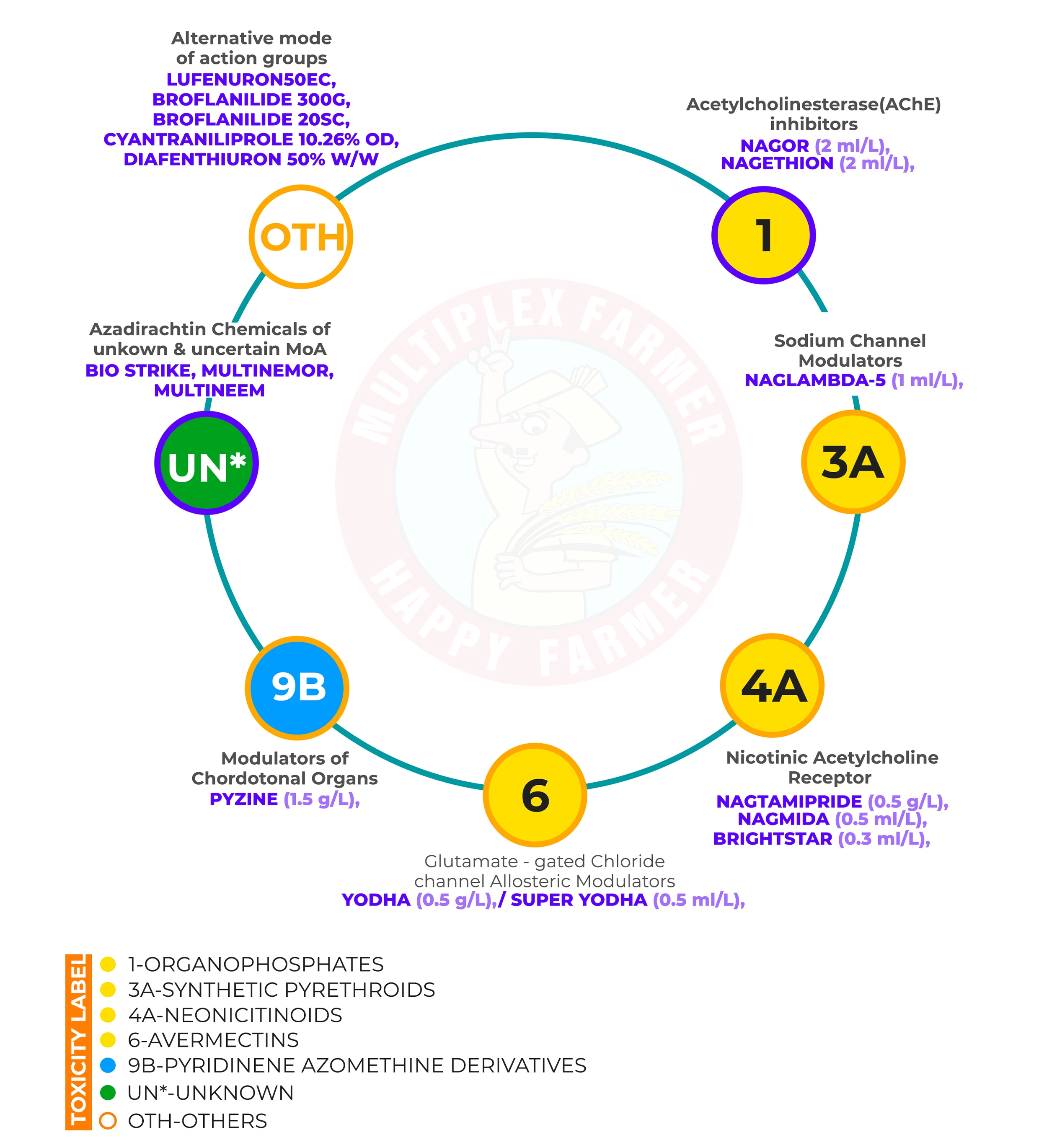India is the largest producer and exporter of chillies contributing to almost one-fourth of the world’s production. The important chilli-growing states in India are Andhra Pradesh, Telangana, Maharashtra, Karnataka and also in several other states as round the year crop. In chilli, sucking pests cause 60 to 75% yield loss. Recently, an invasion of Thrips parvispinus was reported in India causing a widespread severe infestation in more than 0.4 million ha of chilli growing areas. Large-scale cultivation of host plants and favourable climatic conditions in India and other countries similar to native range, favour its further spread and establishment.

The pest completes its life cycle within 14-15 days and both nymphs and adults lacerate on flowers, leaves and small fruits resulting in deep punctures, scratches Distorted leaf lamina with necrotic area in leaves and brown streaks, affecting pollination, drying and withering of flowers intern affects the fruit quality. It was first noticed in Bengaluru and later it spread to every corner of the country. Managing this pest is very challenging as this has little unique lifecycle where there is a little gap between the different stages which makes it difficult to take up the pesticide application, being an invasive pest it doesn’t have any natural enemies, which hinders the natural control of the pest.

Therefore, practising integrated pest management by altering the different modes of action group molecules would give better control of this pest.
Erection of blue or yellow/white sticky traps- Multiplex attract @ 40 traps/ Acre at crop canopy height for mass trapping purposes. Further, these thrips will be attracted more to crops with white-coloured flowers.
The management of T. parvispinus is so challenging because of its short lifecycle, increased number of generations per season, repeated use of the same insecticide, alternative use of same mode of action insecticides and disapproved molecules leads to resistance and resurgence development and results in uncontrolled increase in thrips population.
To avoid this, the spray should be taken by altering the different recommended molecules belonging to different modes of action in a rotational basis. That is Nagtamiprid @0.5g/L / Nagor 2ml/L/ Yodha @ 0.5g/L / Nagmida @ 0.5ml/L / Naglamda-5 @ 2ml/L.
The use of biopesticides like Beauveria bassiana, Verticillium lecani / Pseudomonas fluorescence along with neem is feasible and economically viable in managing the thrips because this will not lead to resistance and resurgence in black thrips. Since T. parvispinus is an invasive pest, repeated use of the same chemical may lead to its outbreak. However, pesticides can be replaced by neem oil because they are environmentally safe and can effectively control the thrips population, but these are contact in action and hence need frequent application and sprays to be taken at evening hours covering flowers and both the surface of the leaves.
All the life stages of thrips can be seen at a time in the field and each moult generally takes place in 2-3 days and hence to achieve maximum control of black thrips attack repeat the spray once in 3 days to hit the new moult stages.
